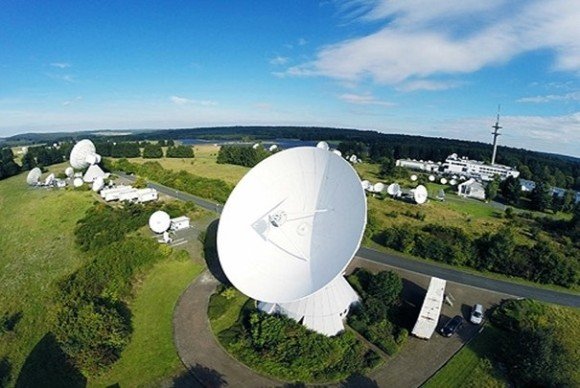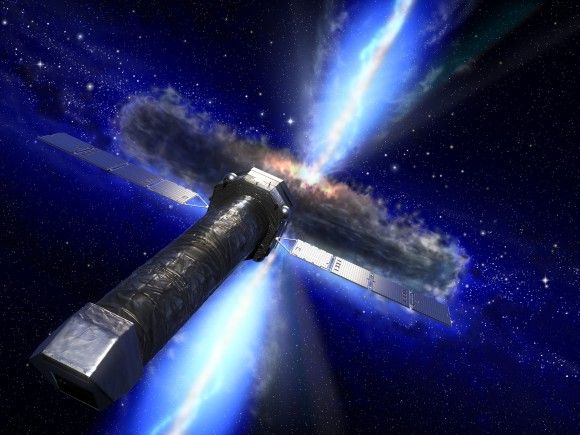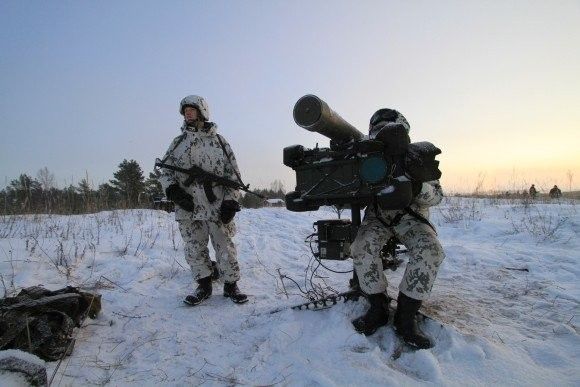MSPO 2017: Polish Modernization Proposal for the Mi-24 Helicopter
Recommendations contained within the Strategic Defence Review place a great emphasis on acquisition of attack helicopters, as a one of the relevant strike systems that could be used in crisis situations, in which a threat would emerge for the Polish territory. “Kruk” programme is the initiative of the Technical Modernization Plan aimed at the said procurement. In practical terms, the new helicopters may attain full readiness in the first half of the next decade, at the earliest. Not only is this dependent on the procurement schedule, but also on the entailed training programme and certification. Considering the context above, one of the potential solutions would be to modernize the existing Mi-24 fleet, operated by the Polish Armed Forces.
As it was indicated within the Strategic Defence Review, the attack helicopters, alongside the long range artillery, remain one of the primary assets making it possible to strike the enemy deep behind his line, providing a freedom of manoeuvrer. The gunships are a mobile asset that make it possible to attack targets beyond the frontline, also destroying the elements of the enemy forces that pose a critical threat.
Strategic Defence Review is based upon an assumption that the Polish Armed Forces should be focused on defending the Polish territory, not on foreign deployments. The potential adversary of Poland would outnumber the Polish forces, hence the Polish units should be able to flexibly respond to threats, such as the operations conducted by the armoured units of the enemy. Attack helicopters utilizing long range (6-8 kilometres or more) ATGMs, executing their operations outside the frontline area, remain one of the primary assets that would make it possible to counter similar threats. As a result of the above, the “centre of gravity” has been shifted in the Polish helicopter programmes, with the priority and emphasis now placed on the attack helicopters, instead of the multi-role platforms.
Beforehand, the latter were a priority asset to be acquired. Due to the Polish activities undertaken during the international deployments, and lack of recognition of threats posed by Russia, the Polish Armed Forces, as well as the military, started to look towards the multi-role helicopters as a priority. They were an important asset for MEDEVAC, escort and transport operations. The requirement to provide such support remains undisputed. These tasks may be carried out though by the existing platforms, such as the W-3 or Mi-17 aircraft.
Meanwhile the Mi-24 Hinds remaining in possession of the Polish Armed Forces have lost their primary combat capabilities a few years ago, as the lifetime of the ATGMs integrated with this platform has come to an end. The Mi-24 may still use unguided rockets or guns, nonetheless such armament would expose the said platform to losses, in case of a battle involving an enemy with modern air defence assets at his disposal, which would render the rotary-winged assets unusable.
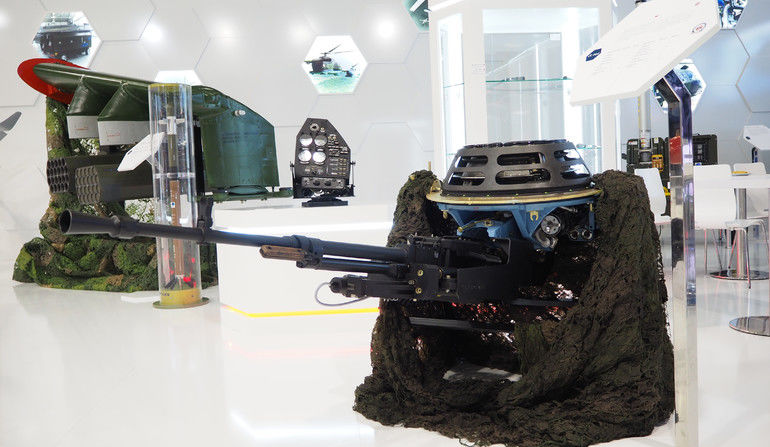
Attack helicopters constitute just a little bit more than 10% of the whole helicopter fleet operated by the Polish Armed Forces. The meaning and role played by the helicopters is also proven by the fact that they are included among the five types of conventional armament (alongside main battle tanks, fighting vehicles, heavy artillery and fighter aircraft) covered by limitations and control imposed within the framework of the Treaty on Conventional Armed Forces in Europe, CFE [1].
The conferences, during which the treaty was being prepared, basing the effort on the experiences gathered during the First and Second World Wars (trench and manoeuvre warfare respectively) have divided Europe into four areas, zones, for which the safe limits of owned armament have been imposed. Not only did this allow for provision of a stable military balance, on condition that certain limits are maintained, but also for making it possible for the signatory states to have effective means of self-defence, without creation of excessive offensive capabilities. The attack helicopters limit imposed on Poland assumes that Warsaw may operate 130 such platforms - the limit is being used only up to the level of 20% now.
The Strategic Defence Review analyses suggest that Poland should have, ultimately, even up to 100 attack helicopters at its disposal, even though the original plan assumed that 32 examples would be acquired. The three-fold increase of the needs, in the domain of attack helicopters, with less emphasis placed on acquisition of transport helicopters, and a decision taken to gradually increase their quantity (specialized aircraft for the Navy and Special Forces are acquired within separate procedures) had to lead towards revaluation of the priorities within the helicopter fleet modernization programme.
Possible Variants
Acquisition of a new “Kruk” programme attack helicopter would take from 4 to 6 years, nonetheless more time is needed for the acquired aircraft to gain full operational readiness, with a requirement to carry out trainings and certifications. Even if implementation of the Kruk programme begins shortly, for example: next year; the capabilities and requirements gap is going to exist for at least a couple of years.
In order to meet the urgent requirements within the domain of national defence, one should give consideration to modernization of the domestically operated Mi-24 helicopters. This is even more critical, as the quantity of the attack helicopters is going to go gradually up, which would require highly qualified personnel to be involved in the process, including instructors. The helicopter fleet backlogs may make it significantly more difficult to replace the assets owned.
The Mi-24 platform is very much capable aerodynamically, however it does not have any guided armament at its disposal, thus it would be usable within a limited scope, on a contemporary battlefield. It is a reliable, massive and structurally stable platform that has been combat proven in the Afghan theatre. However, the helicopter in question still lacks modern armament and some electronic systems. Maintaining and, at further stages, expanding the combat capabilities of the attack helicopters, also in the quantitative dimension, would allow for continued operational use of the platform for at least 10 years. Such solution would make it possible to maintain the national defence capabilities and to comply with the allied requirements. It would also be a decisive factor in provision of continuity of training for the flying crews, allowing them to maintain a high level of proficiency.
It is known that potential modernization of the Mi-24 gunship should assume integration of guided weaponry, including ATGMs the range of which would be as long as 6 to 8 kilometres, as well as optronic sensors or self-protection countermeasures. The three elements listed above, alongside the airframe and design solutions itself - in case of the Mi-24 the airframe these elements shall be qualified as capable enough for further use - have a decisive value for the helicopter’s usability on the battlefield.
The guided missiles allow for precisely attacking moving targets, including main battle tanks and fighting vehicles, at distances of more than 5 kilometres, beyond the range of some of the enemy anti-aircraft systems (such as the portable MANPADS-class solutions). The optronic sensor makes it possible to track and detect targets at proper distance, also making it possible to use guided weaponry and conduct operations at night and during the day.
Finally, self-defence systems would form a critical requirement, considering the fact that the battlefield remains densely saturated with air defence assets. Air-to-air missiles may also be utilized by the enemy helicopters. Lack of proper solutions within that scope has caused a situation in which the Ukrainian helicopter aviation has suffered from serious losses, which forced the Ukrainians to limit their operational activities over the Donbas region back in 2014.
The Polish industry remains in possession of capabilities and knowledge needed to provide full scope of maintenance and overhauls for the Mi-24 platform. WZL No. 1 S.A. company is the sole entity in Poland that deals with overhauls of the Mi-24 platform. The facility has gathered more than 25 years of experience in repairs, maintenance, overhauls and modernization of the Mi-24 helicopters. WZL-1 S.A. has been a place where repairs have been, in an ongoing manner, carried out with regards to damaged helicopters, including the ones that suffered from serious damage resulting from combat use within the framework of foreign deployments. WZL-1 has a full array of technical and technological means at its disposal, required to carry out the aforesaid work.
The facility, working together with the Air Force Institute of Technology (ITWL), since around a decade has been implementing a programme of extending the Mi-24 helicopters fleet’s operational lifetime. This also concerns the Hind’s components.
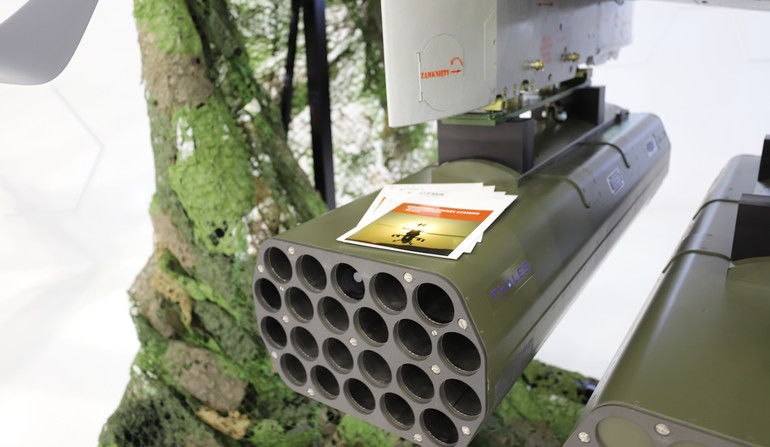
Recently the facility has attained a status of a centre of competency in the domain of rotary-winged aircraft, playing the leading role when it comes to helicopter overhauls and maintenance in Poland. Some efforts related to modernization of the Mi-24 helicopters were undertaken by WZL-1 S.A. at the beginning of the millennium, assuming that the Hellfire missile would be integrated with the Hind. Nonetheless, the programme was suspended.
Throughout the last 12 years WZL-1 S.A. has finalized a series of modernization initiatives concerning the Polish Mi-24 gunships, with 2 of those initiatives having a comprehensive dimension with regards to the communication systems, avionics, self-defence suites, external and internal lighting systems and tailoring the helicopters to use of gen. III class B NVGs, in line with the MIL-STD-3009 norm.
All of the modernization was completed on the basis of the potential offered by WZL-1 S.A., starting from the design stage, through the execution of work and full certification to finish with, with the latter step executed in collaboration with the Air Force Institute of Technology (ITWL). WZL-1 S.A. is also in possession of complete design documentation concerning the modernization work performed, whereas one should note that each and every subsequent modernization initiative shall be seen as complementation of the work already performed, with simultaneous integration with the systems that had been set up on the airframes previously.
During the Kielce MSPO event, the company is presenting more concepts of modernization of the Mi-24, proposing that new types of armament are integrated with the said platform. Here we are referring to the USPU Mi-24 gun turret that may be integrated with the ZM Tarnów’s WKM-Bm heavy machine gun. Such solution would make it possible to use NATO-compliant ammunition in case of the fixed armament of the Polish Hinds.
Moreover, the company is also showcasing a rocket system utilizing the IRS induction rockets manufactured by Thales. These rockets are also being offered as a laser-guided weapon, the accuracy of which has been brought to 1 metre.
The induction rockets make use of digital and wireless technologies, which enhances the safety of use. The adopted design solutions also increase the weapon’s accuracy. The rockets may be launched against targets at distances ranging from 500 to 5000 metres, and have been included in the French inventory since 2009. Throughout the said period they have been used frequently by the land forces and special forces. Starting from the year 2019, the system is to be integrated with the Tiger attack helicopters.
Last year, TDA company (a part of the Thales Group), Thales Polska, PGZ and Mesko facility have concluded a memorandum of understanding, on production of the induction rockets in Poland, at the Mesko facility.
IRS rockets are fired from Telson launch pod, housing, depending on the variant, from 2 to 22 rockets. A helicopter featuring the TELSON 22 pod is showcased during the MSPO event, with 22 guided effectors. Through integration of the said system, Mi-24 would receive precise munitions allowing the user to attack targets at distances of up to 5 kilometres. Using the guided rockets carried in the pods enhances the rocket pods’ effectiveness, also making it possible to save money, by limiting the use of the costly ATGMs.
The representatives of the WZL-1 S.A. facility declare their full readiness to integrate the ATGM system indicated by the Ordering Party, along with an optronic sensor, on the Mi-24 platform. The time required in order to integrate the individual systems may vary, depending on the solution selected.
Fully qualified flying and ground crews, complete maintenance infrastructure and technical abilities to maintain operations of the Mi-24 helicopters until 2030 and beyond remain at Poland’s disposal. At the same time, the process of acquiring and introducing of a new helicopter into service will be long and time-consuming. Thus it seems to be justified to extend the service period for the Mi-24. Furthermore, one should note that modernization would be carried out by the domestic entities, gathered within the Polish Armaments Group.
The proposed modernization concept falls within the framework of the work already carried out with regards to the Polish Mi-24 helicopters, constituting another element of the modernization process, aimed at extending the service lives of the attack helicopters operated by the Polish Armed Forces.
The article has been prepared on the basis of the materials provided by the WZL 1 S.A. facility.
[1]Treaty on Conventional Armed Forces in Europe, CFE) – framework agreement concluded in Paris, on 19th November 1990.


